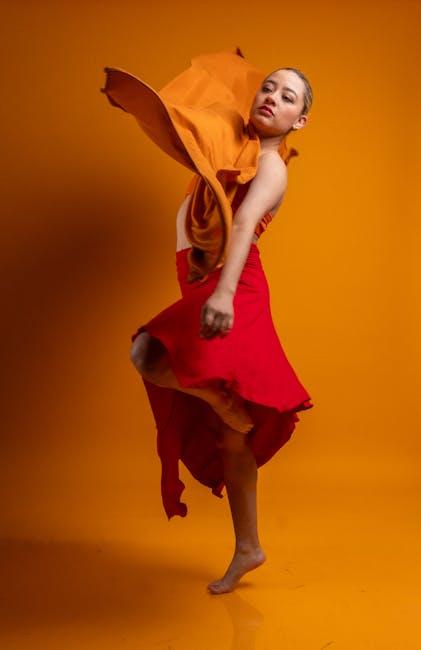In the realm of modern cinema, the allure of color grading has become an indispensable tool for filmmakers, shaping the visual narrative and emotional tone of films. As this technique evolves, a critical question emerges: is color grading altering the realism of contemporary storytelling? This article delves into the intricate balance between artistic expression and authentic representation, examining how color manipulation influences audience perception. By analyzing key examples and industry trends, we aim to uncover whether the pursuit of aesthetic perfection is enhancing or detracting from the genuine essence of film.
Impact of Color Grading on Audience Perception
The way audiences perceive a film is profoundly influenced by its color grading. Color choices can evoke specific emotions, subtly guide the narrative, and even alter our understanding of a scene. For instance, a cool blue palette might suggest a sense of calm or detachment, while warm hues could evoke feelings of nostalgia or comfort. This intentional manipulation of color can create a heightened sense of reality, drawing viewers into a world that feels both familiar and fantastical.
- Emotional Response: Colors can trigger psychological reactions, influencing how viewers feel about characters or plot developments.
- Storytelling Enhancement: Consistent color schemes can help convey themes and underline story arcs.
- Visual Continuity: Grading ensures that the film maintains a cohesive look, which can be crucial for maintaining immersion.
However, the pursuit of aesthetic perfection through color grading might sometimes distance the audience from the raw, unfiltered reality of a scene. While it crafts a visually appealing experience, it can also challenge the viewer’s perception of authenticity, leading them to question whether the beauty they see is natural or constructed.

Balancing Artistic Vision with Authentic Representation
In the pursuit of cinematic excellence, filmmakers often find themselves at a crossroads where their creative aspirations intersect with the imperative of genuine portrayal. Color grading, a pivotal tool in post-production, serves as both a canvas for artistic expression and a means of enhancing narrative depth. Yet, it raises the question of whether this manipulation distorts the authenticity of the film’s world. By adjusting hues and tones, directors can craft a visual atmosphere that aligns with their storytelling vision, creating a mood that resonates with audiences. However, this same process can sometimes lead to a departure from realism, potentially altering the audience’s perception of time, place, and emotion.
- Artistic Enhancement: Offers a unique palette that complements the film’s thematic elements.
- Risk of Distortion: May lead to a visual experience that feels detached from reality.
- Authenticity vs. Aesthetic: Striking a balance is crucial to maintain credibility while achieving desired visual impact.
Ultimately, the challenge lies in leveraging color grading to enhance storytelling without compromising the film’s authenticity. As audiences become more discerning, the ability to maintain this balance will define the future of visual storytelling.

Technological Advances Shaping Modern Cinematic Realism
In recent years, technological innovations have profoundly impacted how realism is portrayed in films. Among these advancements, color grading stands out as a pivotal tool that transforms raw footage into visually stunning narratives. This process involves manipulating colors to evoke specific emotions, highlight themes, and create a consistent visual style. Filmmakers are now able to craft unique atmospheres that can either enhance or deliberately alter the perception of reality within a film.
Some of the key technologies influencing this shift include:
- High Dynamic Range (HDR): Enhances the contrast and color range, allowing for more lifelike images.
- AI-driven Tools: Automates complex grading tasks, providing filmmakers with more creative freedom.
- Advanced Software: Programs like DaVinci Resolve offer powerful features for precise color manipulation.
While these technologies offer unprecedented control, they also raise questions about the authenticity of the cinematic experience. Is the hyper-realistic color palette enhancing the story, or is it shifting the viewer’s perception away from a more grounded reality? This delicate balance continues to challenge filmmakers in their quest to authentically portray the world on screen.
Recommendations for Achieving True-to-Life Visuals
- Understand the Narrative: Tailor color grading to serve the story. Prioritize hues and tones that reflect the narrative’s emotional core without overpowering it. Balance is key; subtlety often enhances realism.
- Utilize Natural Lighting: Emphasize natural lighting techniques during filming to reduce heavy reliance on post-production corrections. This approach preserves the authentic atmosphere of the scene.
- Leverage LUTs Wisely: Use Look-Up Tables (LUTs) to maintain consistency, but avoid one-size-fits-all solutions. Customize LUTs to complement the film’s unique visual language, ensuring they enhance rather than dictate the aesthetic.
- Consult with Cinematographers: Collaborate closely with the cinematography team to align on a shared vision. Their insights can guide the color grading process to reflect the intended realism.
Incorporating these strategies can lead to visuals that resonate with authenticity while still allowing creative expression. By prioritizing the story and working harmoniously with the film’s natural elements, filmmakers can achieve a balance that honors both artistry and realism.

